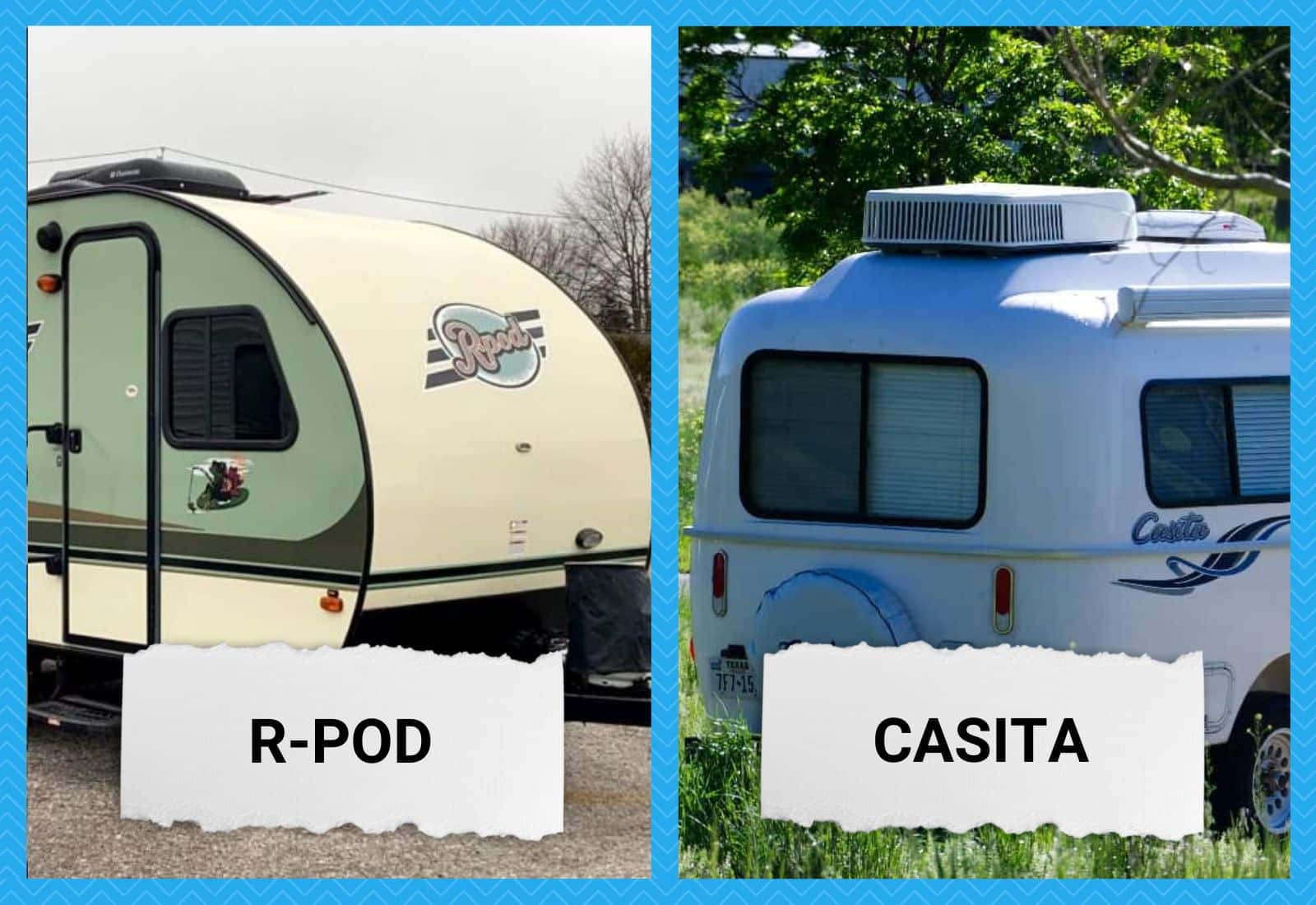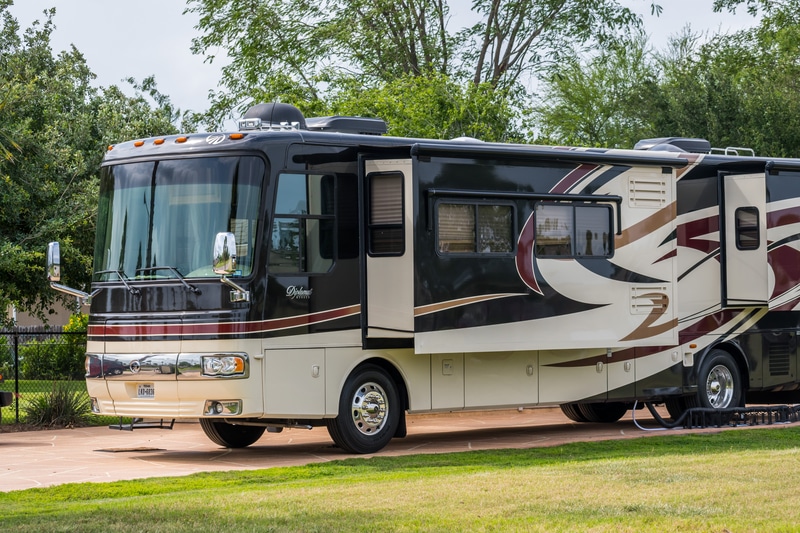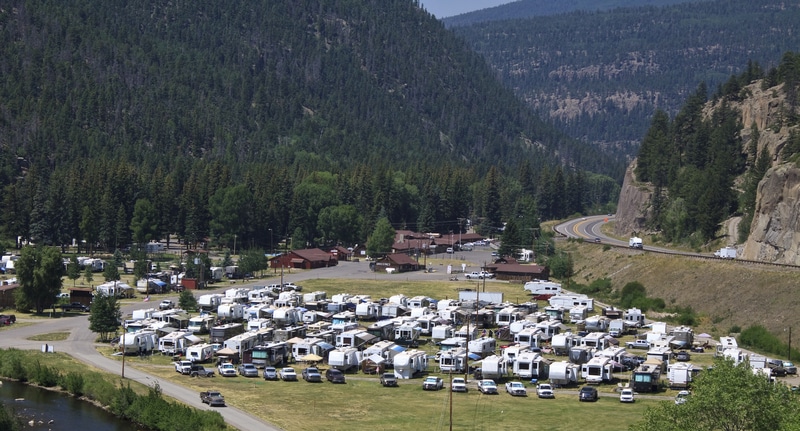
One of the biggest mistakes people make when buying a recreational vehicle is going for the biggest unit within their budget range.
While a 40-foot coach or motorhome may seem like a splendid choice since it’s complete with amenities and installations that improve camping experience, it may not always be suitable for your specific needs.
You must also factor things other than dimensions and comforts into your purchase. Think about how far and long each trip takes. A coach or deluxe fifth wheel is only ideal if you’re planning to hop from state to state or if you want to spend your retirement touring the country.
But a smaller RV will do if you’re only planning to visit local campgrounds and parks.
Using a large RV for short-term camping trips is too expensive. Those beasts are gas guzzlers. They are also harder and costlier to maintain. Most importantly, their price tags can go through the roof.
It’s best to think of RVs as real estate. After all, they double as a home. We know real estate can cost entire life savings. That’s why some people only decide to buy one for their retirement.
Benefits of a small RV
There are plenty of reasons why you’d want to choose a smaller RV. You may think it’s not worth it because you might find it uncomfortable in the long run.
But, as you dig deeper, you’ll realize there’s more to RVs than their dimension. Here are some of the advantages of a small RV.
- Easier to drive than a motorhome or fifth wheel – Since small RVs are lighter, they only require basic driving skills. It almost feels like you’re only driving a van or pickup. Towing is also easier because it will feel like a part of the tow vehicle.
- More parking and campground options – There are more designated parking spaces and campgrounds for travel trailers and campervans across the country than the bigger rigs. You might find a campground every few dozen miles, so you don’t have to worry too much about where to park or if you have enough gas to meander around the national park looking for the perfect spot.
- Easier to park on your property – After a long, stressful week of camping and driving, you want to reach home, get off the steering wheel, go to your room, and drop dead on the bed. Then, you remember, you still need to park your rig correctly in your yard. Unless you have a yard the size of a football field, it may take creativity to park your RV where it won’t obstruct your other vehicles.
- Easier to maintain and repair – Smaller RVs are easier to maintain than bigger ones. And since most of their electronic and mechanical features are standard, troubleshooting them can be done without advanced technology and tools. They are also easier to drive to the nearest for a tune-up.
- Easier to market and sell – If you’re planning to sell your RV, know that it will take work. Unlike a typical sedan or SUV, which you can trade in for a new unit or sell privately, an RV has a less than 50-50 chance of being sold due to its small market. But smaller RVs tend to have a much larger market because they are cheaper, and most buyers are short-term travelers, meaning they only travel once or twice a year.
R-Pod vs Casita
R-Pod and Casita are two of the smallest travel trailer brands on the market. If you’re looking for a lightweight vehicle to pair with your pickup, either brand can be a fantastic choice.
The R-Pod is brought to us by Forest River, an RV manufacturer known throughout North America for building quality and dependable recreational vehicles.
Any vehicle manufacturer would say the same about themselves, but in the case of Forest River, they’ve lived up to their reputation for more than 25 years.
Casita is just the same, and its maker—Casita Enterprises, Inc.—has been established far longer than Forest River. Casita Enterprises, Inc. has been building lightweight travel trailers since 1983, which manifests in all their brands.
Below is a simple comparison between R-Pod and Casita. It shows their basic features so you can get a feel for each. Hopefully, with the more detailed explanation below, you can decide which investment is more worthwhile.
| Features | R-Pod | Casita |
|---|---|---|
| Dry weight | 3654 lbs | 2,480 lbs |
| Exterior Length | 17' 6" to 25' 0" | 17' |
| Exterior Height | 9' 7" to 10' 7" | 8'11" |
| Exterior Width | 8’ | 6'8" |
| Sleeps | 3 to 4 | 3 to 6 |
| Style Option | RP-153, RP-153, RP-171, RP-171, RP-180, RP-180, RP-189 – DSO, RP-189 – DSO, RP-190, RP-190, RP-192, RP-192, RP-193, RP-193, RP-195 – DSO, RP-195 – DSO, RP-196, RP-196, RP-201, RP-201, RP-202, RP-202 | Standard & Deluxe / Spirit, Independence, Heritage, Freedom, Liberty |
Safety Features
When checking out an RV, prioritize safety over other features. Luckily, both R-Pod and Casita are equipped with many safety features. Among them are a fire extinguisher, smoke detector, LP detector, safety chains, breakaway switch, and deadbolt door lock.
With these features, you can sleep peacefully at night, knowing you won’t wake up to a fire or the smell of leaking propane.
However, both brands have unique safety features, too. For instance, the R-Pod has a carbon monoxide detector, which isn’t specified in the Casita specs.
Meanwhile, Casita has a GFI electrical circuit and safety egress window, both of which you won’t find or are unspecified in the R-Pod specs. Regardless, these additional features keep the likelihood of electrical accidents at bay throughout your camping trip.
Sleeping Capacity
Small RVs are lighter. That’s the apparent truth. Therefore, if a manufacturer wants to reduce the weight of one of their products, they must shrink it a little. That’s what Forest River and Casita did to these RV models.
However, making an RV smaller also affects its interior comfort, and the sleeping area is one of the features that suffer. Surprisingly, both travel trailers can still sleep 3 to 6 people despite their size.
Specifically, in a Casita (any particular model, since they have the same dimension), you’ll find a 54″ x 76″ double bed that can be raised and transformed into a dinette during the day. In addition, there’s a double bunk bed on the side or the other end of the trailer.
The R-pod has almost the same bed choices, but the layout differs. Interestingly, Casita is 1100+ lbs lighter but can sleep more people.
Interior
Apart from the ingeniously placed bedding, both travel trailers’ interiors are packed with various amenities. For example, the R-Pod boasts seamless countertops and a large barreled black stainless steel sink with a sink cover.
This makes cooking and dishwasher rather exciting. Also, the floor is a Designer Carefree, which radiates a high-end feel.
On the other hand, Casita’s interior looks more luxurious with custom marine-grade fiberglass furniture, deluxe insulation, and insulated wall material for storage compartments.
It’s as if the RV is made for high-profile users. Also, the flooring is pretty standard because they used standard vinyl. The LED interior lights illuminate all these beauties.
Which is better, then?
The most honest answer to this question is “it depends.” Different buyers have different needs and preferences. Some may find R-Pods modern style more appealing, while others prefer Casita’s vintage-retro aura.
Some buyers also consider the dimension and sleeping capacity more than other features. So it depends on what’s suitable for the buyer’s specific needs.
This is why you should do your research before going to the dealership. Scan every RV dealership website you can find and explore their inventory.
This way, you’ll know precisely what you need, and once you step into the dealership, no one can talk you out of your choice unless the reason is valid.
Also, you must anticipate technical and mechanical problems when using a lightweight RV. Sadly, making a heavy vehicle, such as an RV, lighter requires the manufacturer not only to reduce its size but also to cut down on materials.
That’s where most of the problems you need to troubleshoot originate from. Unfortunately, the industry still has a long way to go to discover and mass produce the perfect alternative materials that won’t require manufacturers to trade quality for lightweight.


